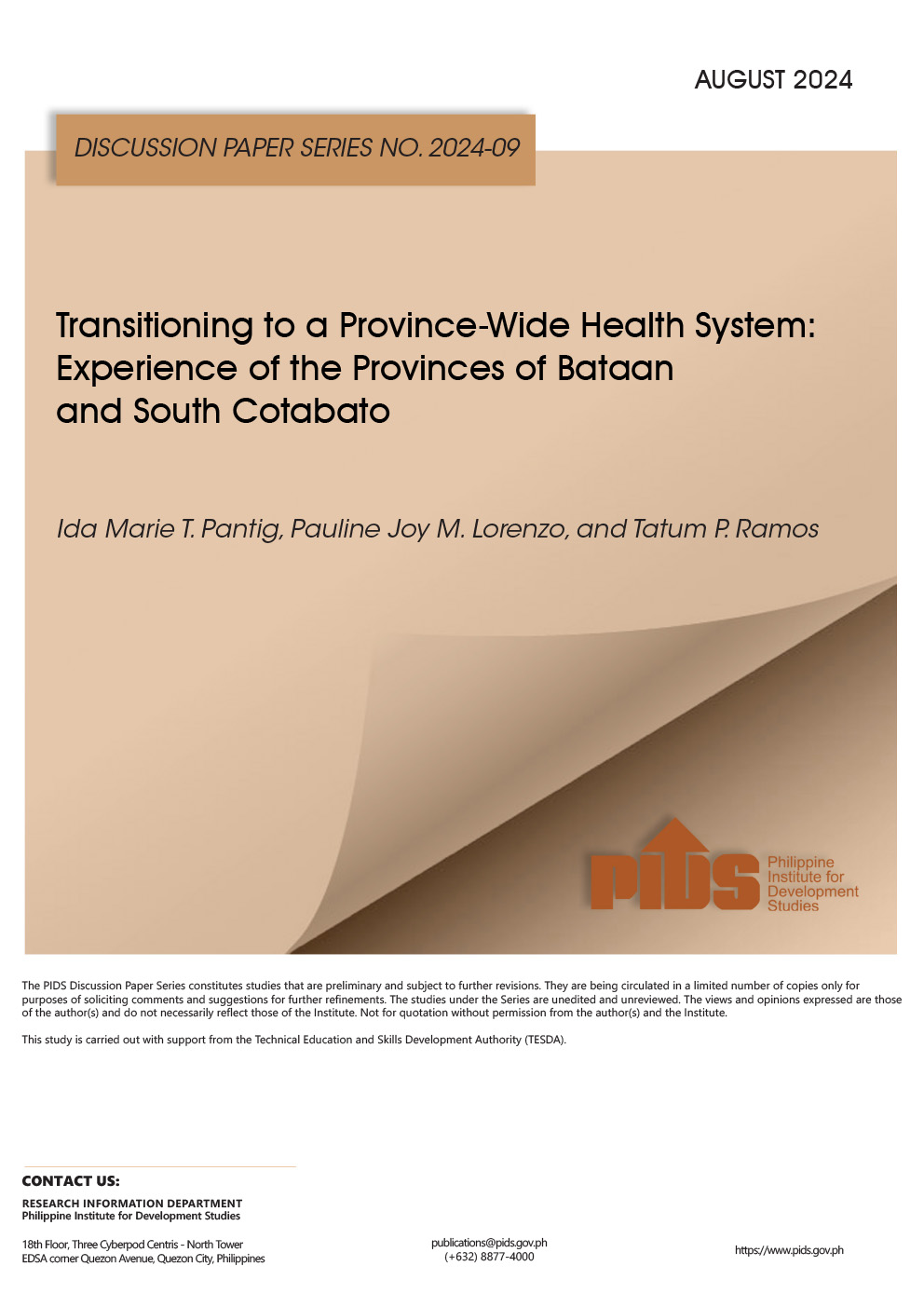MANILA, Philippines – State think tank Philippine Institute of Development Studies (PIDS) is calling for the development of an irrigation and water research program to address the factors contributing to the underperformance of the irrigation sector.
In a discussion paper, the policy research institute said despite the high budget allocated by the government to develop and maintain irrigation systems, growth in the service areas of irrigation systems have been slowing down in the past decade.
The PIDS attributed the underperformance of the irrigation sector to “weak program design and mismanagement.”
Poor planning causes most irrigation systems in the country to suffer from technical problems such as siltation, inadequate source of water and faulty control structures, PIDS said.
“Good governance of irrigation systems must start with a design that ensures compatibility with operational realities and an acceptable level of financial viability to ensure sustainable performance,” the study added.
To improve the operational performance of irrigation systems, the PIDS said the government should shift to designs that take into consideration the durability and functionality of irrigation systems consistent with the availability of water supply and irrigation demand.
To guide the government in improving the design of irrigation systems, PIDS has recommended the creation of an irrigation and water research program by the National Irrigation Administration and related agencies.
“The government should establish and provide core funding for water resource centers in universities composed of technical and socioeconomic experts whom the National Economic and Development Authority (NEDA) can tap in evaluating irrigation-related projects. This will strengthen the capacities of NIA, NEDA and the Department of Agriculture in monitoring and evaluating irrigation projects through the conduct of rigorous and objective analyses to guide their decisions,” the PIDS said.
The research institutions also underscored the need to clearly delineate the roles of NIA and irrigators associations in the management of irrigation systems.
NIA gives IAs partial or full management control of irrigation systems. The agency is allowed to collect irrigation service fees for the operations and maintenance of these systems.
Government subsidies for operations and maintenance of irrigation systems are initially provided but are gradually reduced over a five-year period.
“However, majority of IAs do not have the financial capacity to function and be effective. Most IAs are faced with problems of pervasive water theft, members not following the cropping calendar, and most of them still asking for resources for operations and maintenance such as payment for electricity bill,” the study said.
The impact study evaluated 66 communal irrigation systems and 22 national irrigation systems in 16 provinces in Luzon.
Based on the IAs surveyed by the research team, successful associations maintain irrigation systems that have adequate water supply, less institutional problems, as well as adequate budget and facilities.
“If we take these factors as indicative of necessary requirements for successful IAs, then at the minimum, NIA’s system design and service areas should have better estimates of available water,” the PIDS said.
In a discussion paper, the policy research institute said despite the high budget allocated by the government to develop and maintain irrigation systems, growth in the service areas of irrigation systems have been slowing down in the past decade.
The PIDS attributed the underperformance of the irrigation sector to “weak program design and mismanagement.”
Poor planning causes most irrigation systems in the country to suffer from technical problems such as siltation, inadequate source of water and faulty control structures, PIDS said.
“Good governance of irrigation systems must start with a design that ensures compatibility with operational realities and an acceptable level of financial viability to ensure sustainable performance,” the study added.
To improve the operational performance of irrigation systems, the PIDS said the government should shift to designs that take into consideration the durability and functionality of irrigation systems consistent with the availability of water supply and irrigation demand.
To guide the government in improving the design of irrigation systems, PIDS has recommended the creation of an irrigation and water research program by the National Irrigation Administration and related agencies.
“The government should establish and provide core funding for water resource centers in universities composed of technical and socioeconomic experts whom the National Economic and Development Authority (NEDA) can tap in evaluating irrigation-related projects. This will strengthen the capacities of NIA, NEDA and the Department of Agriculture in monitoring and evaluating irrigation projects through the conduct of rigorous and objective analyses to guide their decisions,” the PIDS said.
The research institutions also underscored the need to clearly delineate the roles of NIA and irrigators associations in the management of irrigation systems.
NIA gives IAs partial or full management control of irrigation systems. The agency is allowed to collect irrigation service fees for the operations and maintenance of these systems.
Government subsidies for operations and maintenance of irrigation systems are initially provided but are gradually reduced over a five-year period.
“However, majority of IAs do not have the financial capacity to function and be effective. Most IAs are faced with problems of pervasive water theft, members not following the cropping calendar, and most of them still asking for resources for operations and maintenance such as payment for electricity bill,” the study said.
The impact study evaluated 66 communal irrigation systems and 22 national irrigation systems in 16 provinces in Luzon.
Based on the IAs surveyed by the research team, successful associations maintain irrigation systems that have adequate water supply, less institutional problems, as well as adequate budget and facilities.
“If we take these factors as indicative of necessary requirements for successful IAs, then at the minimum, NIA’s system design and service areas should have better estimates of available water,” the PIDS said.











